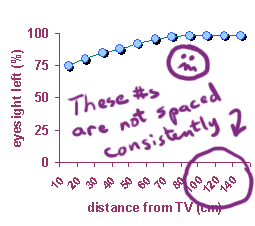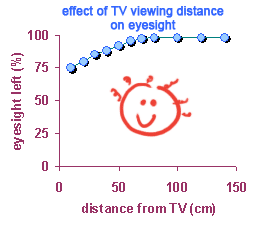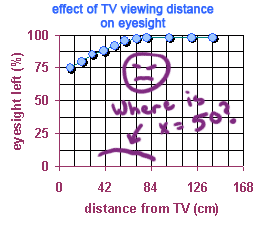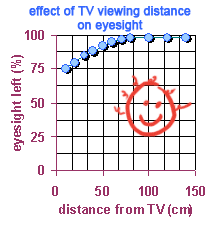Next step: scale the axes
Maybe you think we're done now, but were not! We still need to figure out how to spread the numbers out between the smallest and largest. And this is very important: you need to spread those numbers out evenly!
 |
 |
And just as importantly, we want to make it easy on ourselves later on. If one box on the graph paper stands for 50 units, that will make our job easy, but if one box on the graph paper stands for 42 units, that would make our job difficult, when it comes to locating the dots on the graph.
 |
 |
So think about how to spread out the numbers easily and evenly .
You want to try to end up with about 4 to 6 labelled intervals. Any more than this and your graph will be slow to produce and hard to read.
So, if your axis ranges from 0 to 200, put interval labels every 50 units.
If your axis ranges from 0 to 500, put interval labels every 100 units.
If your axis ranges from 0 to 125, put interval labels every 25 units.
... and so on.
Copyright University of Maryland, 2007
You may link to this site for educational purposes.
Please do not copy without permission
requests/questions/feedback email: mathbench@umd.edu